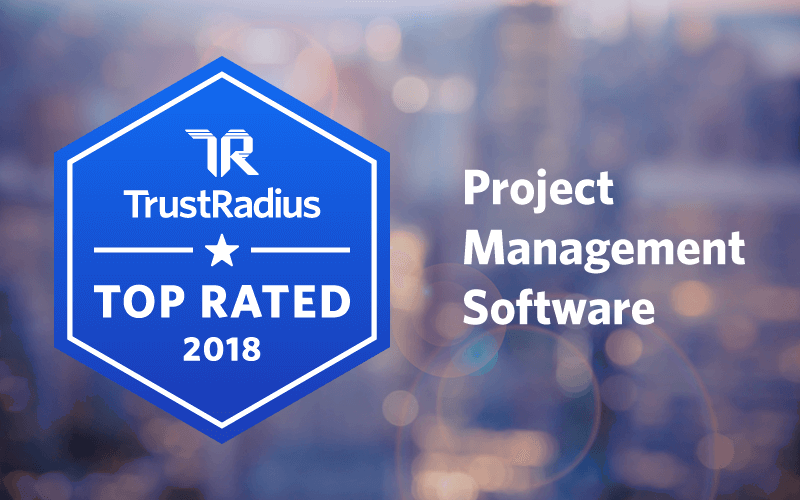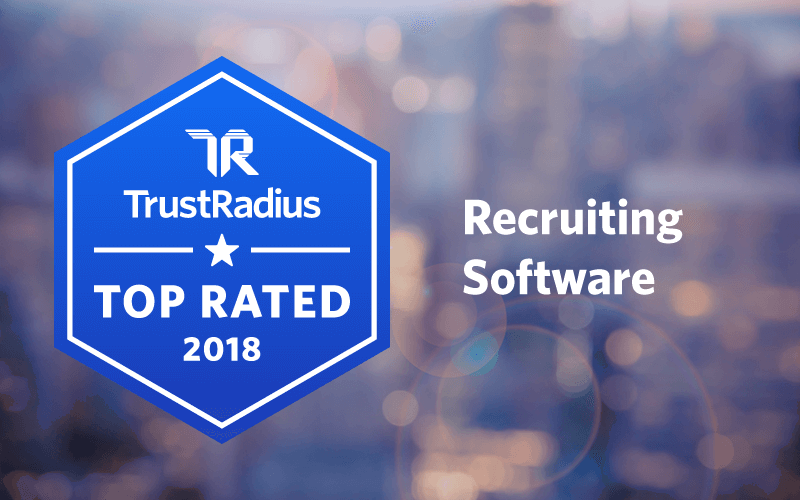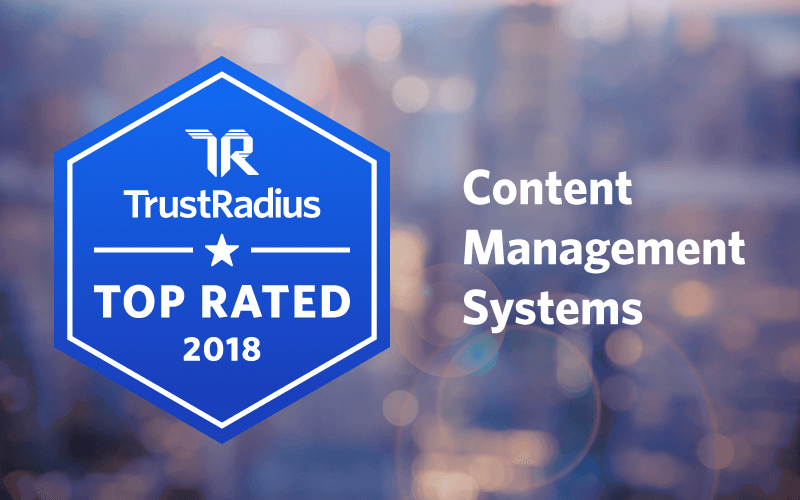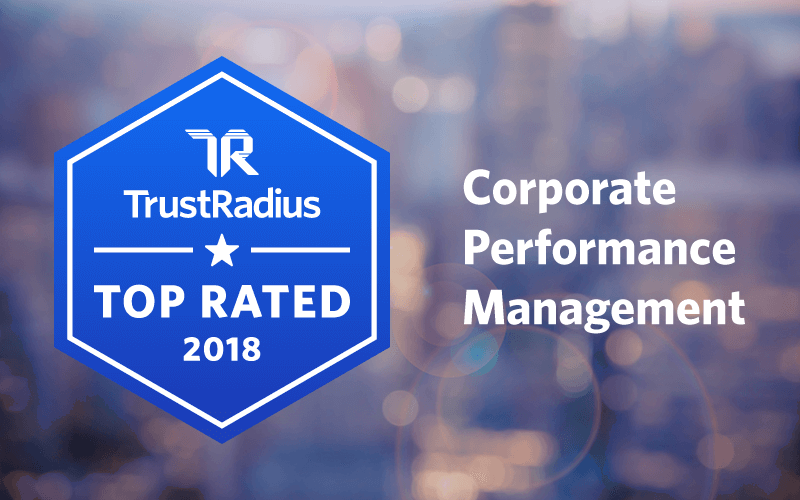B2B Connection
Information and resources for technology buyers
Today, we awarded the 2018 TrustRadius Top Rated badges for Project Management Software. The TrustRadius Top Rated awards are unique in that they are an unbiased reflection of customer sentiment, based solely on user satisfaction scores. They are not influenced by analyst opinion, the vendor’s company size, popularity, site traffic, or status as a TrustRadius customer. Project Management Software is designed to increase efficiency by allowing users to organize projects and resources and delegate individual tasks, as well as assign deadlines for deliverables. Most Project Management platforms also support collaboration by providing communication and document management features. Different platforms are better suited for different departments, PM methodologies, workplace cultures, technology environments, and scales of work. Reviews from people like you can help you sort out which product will work best for your company’s needs. Here are the winners: Overall Top Rated JIRA Software Atlassian JIRA is specifically designed to help software development teams manage tasks. In JIRA’s framework, projects are a collection of tasks or issues that get prioritized, assigned, and tracked across team members. Reviewers find the time tracking features and the collaboration features helpful, and say JIRA supports an agile project strategy well. “JIRA is a perfect […]
Today, we awarded the 2018 TrustRadius Top Rated badges for Recruiting Software. The TrustRadius Top Rated awards are unique in that they are an unbiased reflection of customer sentiment, based solely on user satisfaction scores. They are not influenced by analyst opinion, the vendor’s company size, popularity, site traffic, or status as a TrustRadius customer. Recruiting Software assists hiring managers and recruiters by automating steps to identify and hire job candidates. It streamlines the processes of searching for, attracting, interviewing, and onboarding new personnel. Applicant Tracking Systems (ATS) and Recruitment Management Systems (RMS) fall into this category. User feedback on recruiting software can help buyers evaluate flexibility, scalability, ease of integration with other talent management and HR systems, and what the candidate experience is like–important factors that determine whether a product will work well for their recruiting needs. Here are the winners: Overall Top Rated Oracle HCM Cloud Oracle HCM Cloud is a talent management suite that provides human resource management features, payroll management, and HR reporting features, in addition to the typical recruiting and ATS features. Reviewers find the suite’s advanced analytics and reporting features useful, and appreciate the ability to customize the system to their processes. “…very […]
Today, we awarded the 2018 TrustRadius Top Rated badges for Content Management Systems. The TrustRadius Top Rated awards are unique in that they are an unbiased reflection of customer sentiment, based solely on user satisfaction scores. They are not influenced by analyst opinion, the vendor’s company size, popularity, site traffic, or status as a TrustRadius customer. A Content Management System (CMS) allows a user to quickly manage and publish content for a variety of website types, including blogs, corporate websites, and ecommerce sites, without needing the expertise of a developer. Most CMS products offer a WYSIWYG (what-you-see-is-what-you-get) editor with pre-built templates, layouts, and themes, along with other features like search, tagging, SEO, content versioning, and scheduling. In reality, different CMS products require more or less technical skill, depending on the integrations/plugins, amount of custom styling, content types, and size of the website an organization plans to deploy. Reviews can provide helpful insight for buyers into ease of use versus website complexity, and what (if any) development resources were required with each CMS. Here are the winners: Overall Top Rated Adobe Experience Manager dobe Experience Manager is a business content management solution that supports multi-site content creation, management, and deployment. Users […]
Today, we awarded the 2018 TrustRadius Top Rated badges for Corporate Performance Management. The TrustRadius Top Rated awards are unique in that they are an unbiased reflection of customer sentiment, based solely on user satisfaction scores. They are not influenced by analyst opinion, the vendor’s company size, popularity, site traffic, or status as a TrustRadius customer. Corporate Performance Management Software is sometimes seen as an extension of Business Intelligence (BI). BI tools collect data from multiple internal systems and external sources for analysis, and usually answers questions about past performance such as what happened and why. Corporate Performance Management (CPM) is equally focused on data as an aide to decision-making, but is more forward-looking and is primarily about managing an organization’s performance. The focus of CPM is on forecasting, budgeting, financial planning, what-if analysis, and dashboards to show progress towards individual and project performance KPIs. The CPM market is relatively mature, and most of the following tools have overlapping functionality. However, there are significant differences in emphasis. While many tools do both, some tools are more focused on the financial accounting cycle, while others are more focused on organizational performance and strategy. Here are the winners: Overall Top Rated Anaplan […]
Whether you’re a digital marketer, a savvy entrepreneur, or a website owner trying to boost your site’s conversions, there’s no doubt A/B testing has at one point been a high priority. And if terms like “statistical confidence” or “test variants” leave you feeling confused, it’s time to put yourself on a path towards clarity, and confidence. In this article, we’ve broken down the different parts to A/B testing and the key components to look out for. This information will help you take tactical steps towards improving conversion rates, and ultimately, your bottom line. Now doesn’t that sound like a nice change of pace? The first step in conversion rate optimization (CRO) is to conduct a website analysis to understand how users flow through a site. This is done by identifying where users get stuck on a page, and where they are leaving the site. This analysis is usually done with a variety of tools, including Google Analytics, heat maps, and surveys. Once it is determined what pages and elements on the website need to be optimized, new design elements are created and A/B tested. Examples of design elements include modifying the size of a call-to-action (CTA) button or changing the copy […]
You already know you need to meet your customers on their turf: social media. But successfully engaging them isn’t as simple as creating an account across every platform and shooting outbound posts into a void. Nowadays, your social media needs to be a customer service nerve center, sensitive to every mention of your brand, as well as a tool used to aggregate data about customers so you can learn what they really want. That’s where social customer relationship management comes in. Your social media efforts shouldn’t be detached from your overall customer engagement strategy. Marketing, sales, and support all have occasion to interact with customers on social media; a social CRM strategy will help you organize these interactions so that you can learn from them. With the right tools and savvy execution, you can use branded social media to stretch your influence and deepen your understanding of your audience. What is Social Customer Relationship Management? A social customer relationship management strategy is a coordinated effort between an organization’s marketing, sales, and customer service departments to better engage with customers and increase brand awareness. Social CRM isn’t just about gathering data and making the sale. It’s about creating a two-way conversation […]
Generally, no product wins on all dimensions. When you’re shopping for business software, you’re probably weighing reality against a set of ideal criteria, and preparing to make a few trade-offs. You might not get all the bells and whistles if you have a tight budget, for example. Or the product that’s easiest to use may not have all the features you want. But what’s important to you before you make a purchase may not align exactly with your future self—the one that has to deal with making the product work for your organization. We recently asked buyers at two different stages what is (or was) most important to them. The results reveal subtly different priorities that are important to bear in mind as you make your selection decision. Learning from other buyers’ and reviewers’ experiences could help you feel more confident in your decision and know what to expect from your purchase. First we asked buyers who hadn’t yet made a purchase to tell us which three criteria (from a list of 11) were most important to them. The top three answers were finding a product that shows measurable results (chosen by 39% of buyers), can adapt to fit your […]
Business Intelligence is Just One Flavor of Analytics Business Intelligence (BI) is a critical tool for understanding what is happening in a business, even if recently it has been somewhat eclipsed by emerging technologies that extend the promise of BI-type analytics far beyond its roots in business reporting and dashboards. Both BI and more recent technologies like data science platforms are predicated on gaining business insight based on data analysis. The primary function of BI tools is to explore past trends in a business’s historical data and compare data across time, or evaluate the impact of certain events on the bottom line. Machine learning and data science tools, on the other hand, use algorithms to understand and predict a business’s future performance. The kind of analytics provided by BI tools is often referred to as “descriptive analytics”, meaning that they describe in some detail what has already happened. But this is just one flavor of analytics. BI today is best considered as one component of a continuum of analytics capabilities which are different, but complementary to each other. From Descriptive to Prescriptive There are several other types of analytics in addition to descriptive analytics. For example, diagnostic analytics tries to […]
The secret to talent management boils down to one simple concept: hire (and keep) the right people. Of course, if it was that easy, you wouldn’t be reading this guide! A practical and efficient talent management strategy aligns with company goals and positions your business to recruit talented people that blossom into engaged, active long-term employees, eventually forming the next generation of company leadership. However, superior talent management programs go well beyond business buzzwords. In fact, they can be the key ingredient that transforms an organization into an industry leader. Because successful talent management strategies integrate cohesively with company culture, mission and future goals, they are able to build the kind of workplace that everyone—including the best talent—wants to be a part of. Of course, a corporate culture like that doesn’t happen on its own. It’s the result of careful planning and collective action. Everyone—from human resources managers to the CEO right down to the newest hire—must be wholly invested in employee development as an integral factor in company advancement. Human resources not only needs backing from the executive team, but also a genuine connection with each employee. Naturally, this kind of authentic and cohesive work environment requires investment. But […]
Slack is a popular team collaboration and group messaging platform that allows members of an organization to coact and comment on projects in real-time. Searchable message archives let new team members, or members from different departments, become easily apprised of ongoing conversations and developments on relevant topics. Recently, Slack added a feature allowing users from different companies to collaborate as well, via Shared Channels. According to Slack reviews from authenticated users, the tool features fun gifs, a user-friendly interface, and the notification functionality gets you quick replies from colleagues, making collaboration easier and faster. But every organization is different. Despite its trendiness and noted strengths, the pricing or features of Slack may not suit every company’s culture. If there’s a gap between your needs and what Slack provides, here are nine other collaboration tools to consider. The first few listed allow for more formal task and project management, while the others are more focused on VoIP and video calls or file sharing and document review. Project Management 1. Asana Asana is a free web and mobile project management app that can help keep an entire team in the loop on who’s doing what and when. You can organize your tasks […]
There is no denying that open source software has emerged as a powerful force in the development of modern enterprise technologies. Some of the hottest developments in software technology have emerged with strong links to the open source movement. A good example of this is the Internet of Things (IoT), one of the most talked about technology developments in recent years. Open source software plays a key role in its emergence: It is Linux-based, and open source networking standards make it possible for smart devices from different manufacturers to talk to each other. But although open source software is in the vanguard of many emerging technologies, it will not necessarily eclipse more traditional proprietary software. Get a group of techerati in the same room to discuss the relative merits of open source versus proprietary software, and you’re bound to elicit some strong opinions. However, regardless of where you stand in the open source vs. proprietary debate, you probably use tools every day that were developed with open source programs. Many in the tech industry argue that the collective action of open source development results in better programs and code—an argument which does carry some statistical weight. On the other hand, […]
Lead-based marketing strategies have ruled the digital age, but in the past couple of years an alternative B2B marketing strategy called account-based marketing (ABM) has picked up steam, challenging marketers to think more strategically about the companies they sell to — the contexts in which their leads work. If lead-based marketing is like throwing semi-adhesive objects at a wall to see what sticks, account-based marketing is precisely selecting objects, applying a careful dob of glue, and arranging them as desired. The strategy that leaves the most objects on the wall entirely depends on the organization, its target market, and its approach. For marketing or sales teams that view account-based marketing with a combination of intrigue and skepticism, Demand Gen Report’s ABM Early Benchmark Survey Report may help you understand whether it might be a good fit for your organization. It shows the choices companies make to achieve success with ABM, including how they build a list of accounts to go after, and which content, technology, and measurements they use in ABM campaigns. But before we analyze the report, let’s discuss the concept of ABM in a little more detail. What Is Account-Based Marketing? ABM deployments require the sales, marketing, and […]
Business process management (BPM) is a mature technology that has continued to evolve to meet the changing needs of enterprises. From its origins in middleware integration used primarily by IT staff, through more user-centric systems, the focus has always been on an approach to making an organization’s workflow more effective and more adaptive to changing business conditions. The latest iteration of these tools called “low code systems” reduces the complexity of traditional BPM systems by providing a set of tools that can be used by business users without traditional coding skills. Ultimately, these users can assemble simple applications by using visual tools designed for the technically-savvy “citizen developer”. However, the basic idea of process optimization remains the same throughout these various iterations. If you’re not sure where to start, TrustRadius is here to help you discover what qualities and capabilities you should look for when selecting BPM software. Overall, full-service BPM suites that allow the organization to achieve maximum operational efficiency, usually contain the following components: 1. Modeling: Visual Design Tools Business process modeling means visually conceptualizing current business processes using diagrams and graphical representations. In essence, these representations form the basis for conversations between the IT department and […]
You know the old adage: time is money. And that’s why in a world that’s increasingly loaded with distractions everywhere (hello Facebook-Instagram-Twitter-Snapchat) it’s important to know where your time is going. This is doubly true of your employees, especially in a growing workforce of freelancers and remote workers (whom you may not even have met in person). Here are 5 popular free time tracking tools, listed from highest overall score to lowest, that you might want to look into if you’re looking to better track your or your team’s time. 1. TSheets TSheets offers time tracking and scheduling capabilities, replacing traditional time cards, and allowing companies to streamline payroll. TSheets tracks time and GPS points (even without cell or internet service) then automatically syncs when back in service. There’s also a feature called “Who’s Working” which lets a business see what employees are working on and where at any given time. The company offers a free plan for one user, as well as more robust paid options. TSheets also offers customizable reminders and alerts, integrations with accounting tools Quickbooks and Xero, and free unlimited phone, email, and chat support. One user says, “TSheets tracks and monitors our employees, and their respective […]
Your subscription was successful. Thank you for subscribing to the TrustRadius Buyer Blog.
MarTech 2017–the annual conference for senior-level marketing, IT, and digital executives and experts at the intersection of marketing, technology, and customer experience–is fast approaching. At the conference, Scott Brinker will unveil his updated MarTech landscape, ushering marketers into the latest wave of marketing technology innovations. Last year’s landscape showed 3,874 marketing technology solutions, almost twice as many as the previous year. You can check out his pre-release of the 2017 Marketing Automation category here; this piece of the landscape alone is up 36% from the 2016 version. In preparation for this year’s conference, which takes place in San Francisco May 9-11, TrustRadius talked with two of the conference organizers and martech thought leaders, Barry Levine (right) and Marc Sirkin (left), about the biggest trends influencing the marketing technology landscape right now, and how collaboration, integration, and strategic investment in technology can drive better marketing practices. Barry Levine covers marketing technology for Third Door Media. Marc Sirkin is VP eCommerce & Marketing, Third Door Media. Data Accessibility & The Evolution of the MarTech Stack What makes a marketing tech stack effective in 2017? What are the biggest differences you see in the technology landscape, as “Martec’s Law” continues to unfold? BL: The “effectiveness” of a […]
Traditionally, industry analysts like Gartner and Forrester have played a central role in informing IT purchasing decisions. However, they tend to focus on larger, better known vendors and have very limited coverage of emerging or open source solutions. Moreover, the primary data sources for researchers are conversations with vendors, augmented by customer surveys and calls (the audience is often directed by vendors) and occasionally lab tests. Few analysts have hands-on experience with every product, nor do they work with the products on an ongoing basis to experience customer support, upgrades, test integrations, etc., so coverage can lack usage details highly relevant to buyers. For this reason, IT executives find that conversations with peers are often vital to securing unfiltered, direct knowledge of a product’s capabilities, and any hidden issues like difficulty of implementation, integration with other products, or customer support experience. This kind of information can be invaluable to help formulate areas of concern to drill into during vendor calls, or as part of an RFP process. The challenge with peer conversations is scalability. Most IT executives have limited personal networks so it is challenging to talk to enough people who have used/evaluated the same set of products recently, and […]
As account-based marketing has continued to catch the attention of practitioners, marketing technology vendors, and the Marketing media, both the supply of and the demand for ABM technology has skyrocketed. New tools designed around account-based marketing challenges and best practices have entered the market; established marketing technologies have released new features to better address account-based marketing use cases (Marketo is a notable recent example, though the release is forthcoming); and some products have merely re-branded, latching on to the ABM trend. TrustRadius Research recently attended the #FlipMyFunnel Festival in Austin, a roadshow entirely dedicated to ABM. We interviewed speakers and attended sessions to find out more about: How account-based marketing impacts the use of foundational marketing and sales technologies like CRM and Marketing Automation. When it’s necessary to invest in new technologies to support new ABM initiatives. What kinds of software support an ABM strategy, and how vendors, experts and practitioners are categorizing them. ABM & Your MarTech Stack Right Now The Role of CRM and Marketing Automation in ABM Marketing automation and CRM systems are frequently called out for making it difficult to set up account-based marketing programs, since MA is built around leads, associating leads with accounts and opportunities is […]
TrustRadius has just published the 2016 Buyer’s Guide to Business Intelligence Software, based on 2,250+ end-user ratings and reviews across 22 BI software products. This is an update to the original guide published in 2014, and is a significant revision containing brand new TrustMapsTM that compare products in the category based on end-user satisfaction ratings and research frequency by prospective buyers on TrustRadius. The guide also contains individual profiles for each of the main vendors and products in the category, advice on how to buy a BI solution, and a discussion of recent trends in the BI market, identifying several trends that have either occurred, or gained in strength, since the first version was published. The grand theme is a change in focus to the needs of business users, and away from IT . Major trends identified are: The shift away from centrally governed, IT-led tools to agile, self-service BI. Most of the full-stack tools like SAP, IBM, SAS and Microsoft have now released data discovery and visualization tools designed for business users/analysts that are not dependent on IT. Data discovery and Visualization vendors building more enterprise-level features. The data discovery and visualization vendors are being pressed to provide more enterprise […]
As more vendors, thought leaders, and practitioners have embraced (and amplified) the account-based marketing trend, specific questions about what is needed for ABM and what type of companies should be doing ABM are becoming more widespread. Best practices for organizational structure, budget share, and technology are growing in complexity. More Marketing and Sales leaders have learned from their early ABM efforts and technology investments, and are willing to share their key learnings with peers. Accordingly, the #FlipMyFunnel Festival has grown from 1 track of presenters in San Francisco in February to 3 tracks in Austin this June. TrustRadius, a media sponsor for the show, attended sessions and interviewed presenters to understand how ABM impacts the overall company strategy and structure, and what is required for this to be effective. One of the biggest takeaways was that interdepartmental alignment underlies all aspects of effective ABM, in terms of collaboration on target account lists, the topics and language of marketing messaging, ABM measurement, and integrated tech stacks. There are two sides to this coin: some interviewees said ABM requires alignment (push), while others said ABM creates alignment (pull). Either way, the consensus is that organizations taking an account-based approach will need to have Sales, Marketing, and […]


















